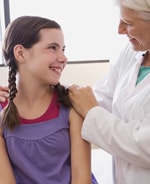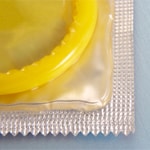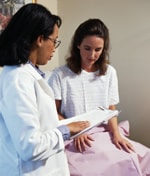 Pregnant? You already know to steer clear of alcohol and cigarettes. Here are other hazards to avoid.
Pregnant? You already know to steer clear of alcohol and cigarettes. Here are other hazards to avoid.
When I was expecting my first child, threats to my baby’s health seemed to lurk everywhere. I knew, of course, that alcohol, cigarettes, and drugs of any kind were off-limits. But what about those lattes I’d chugged before I knew I was pregnant? Did I need to get rid of my beloved cats? What sort of environmental hazards was I unwittingly exposing my fetus to? Nine months of caffeine withdrawal, cat avoidance, and breath-holding-around-noxious-odors later, my strapping baby boy arrived.
Unlike me, you don’t have to be paranoid when you’re pregnant. “You can’t put yourself in a glass bottle during pregnancy—all you can do is avoid known risks,” says Dr. Robert Resnik, a professor of reproductive medicine at the University of California, San Diego, School of Medicine. Since some women, such as those with high blood pressure or gestational diabetes, need to take extra precautions, talk to your doctor about special circumstances that relate to you. Also steer clear of the following:
Too Much Caffeine
For java junkies like me, the research on caffeine during pregnancy has been maddeningly contradictory. Some studies point to problems such as miscarriage and low birth weight, while others show no such relationship. The latest consensus is that only excessive amounts of caffeine (more than 300 milligrams a day) are likely to cause these problems, says Dr. Kathleen Bradley, a maternal-fetal medicine specialist and assistant clinical professor of obstetrics and gynecology at the UCLA School of Medicine. The caffeine content of different brews varies, but you should be able to stay under the 300-milligram mark by limiting your daily quaffing to one or two 5-ounce cups of coffee or tea or a few 12-ounce cans of soda. (Since even non-colas can pack quite a caffeine punch, check the label before you imbibe.) And while chocolate does contain caffeine, it typically has much less—1 to 35 milligrams per one ounce—than coffee.
Cat Litter
Cat feces may play host to a parasite that causes toxoplasmosis. The symptoms (fever, fatigue, and sore throat) are similar to those of a garden-variety flu, but the results (miscarriage, preterm labor, or serious health problems in the newborn) can be devastating. Even so, having a baby on board doesn’t mean you need to send your puss packing, says Marion McCartney, a certified nurse-midwife and the director of professional services at the American College of Nurse-Midwives in Washington, D.C. It simply means you should put your mate on litter-box duty for the nine-month duration. It’s also a good idea to wash your hands after heavy petting sessions with the cat and after handling raw meat. Don’t feed yourself or the cat undercooked meat (which can harbor the parasite). Wear gloves when you’re gardening and avoid children’s sandboxes. (Roaming cats may use these as litter boxes.)
Certain Foods
Beware, foodies: Uncooked, soft cheeses (such as feta, Camembert, Brie, and blue-veined varieties), unpasteurized milk and the foods made from it, and raw or undercooked meats, fish, and poultry may contain listeria bacteria. During pregnancy, listeriosis (symptoms include fever, chills, diarrhea, and nausea) can cause miscarriage, preterm labor, or stillbirth. Some seafood may also contain high levels of mercury, PCBs, and other toxins. If these foods are consumed during pregnancy, the baby is put at risk for developmental delays. (Your local health department may be able to tell you which fish to avoid.) Experts recommend that expecting mothers limit their servings of shark and swordfish—which contain higher levels of mercury than other fish—to one three-ounce serving a month. Finally, lab tests have linked heavy consumption of saccharine to cancer. Though you’re not likely to swill enough of the artificial sweetener to equal several times your body weight, you may still want to forgo those little pink packets for now. Aspartame (NutraSweet, Equal) appears to be a safe sugar substitute.
Herbal Remedies
You know that many prescription drugs are off-limits during pregnancy, but the natural remedies you can pick up at health-food stores are okay, aren’t they? Guess again: Herbal remedies can have a potent effect on your body—and your baby’s—cautions McCartney. Don’t take anything without running it by your health-care provider first. She’ll most likely tell you not to use any during your first trimester. Throughout your pregnancy, steer clear of goldenseal, mugwort, and pennyroyal, all of which have been associated with uterine contractions (which could possibly lead to miscarriage or preterm labor); Asian ginseng (which interferes with metabolism); and feverfew (though popular for migraine headaches, it has unpredictable effects on pregnant women). It’s also wise to avoid herbal teas that purport to have medicinal benefits.
Home Hazards
If you haven’t been gripped by that famous pregnancy cleaning-and-nesting frenzy, chances are you will be soon. Safety tips for those 3 a.m. floor-scrubbing and nursery-decorating sessions: Read labels carefully. Wear gloves and work in well-ventilated areas. And avoid aerosols (which disperse more chemicals into the air than pump bottles do), oven cleaners, paint fumes, solvents, and furniture strippers. Although frequent, heavy exposure to chemicals in the workplace (home workshops count, too) has been linked to birth defects, Bradley explains, home use of most products is more likely to make you feel faint or nauseous—not a great proposition when you’re nine months pregnant and perched high on a ladder or wedged behind the toilet.
Overheating
Soaking in the hot tub or relaxing in a sauna may seem like the perfect way to pamper your pregnant body, but raising your core temperature—especially during the first trimester—may boost the odds of birth defects. It’s safe to soak in a lukewarm bath, though. Just make sure that the temperature is not above 100 degrees and that you get out after about ten minutes, Resnik advises. Sustained exercise in very hot, humid weather can also raise your core temperature. When you do exercise, be sure to drink liquids before, during, and after, and if you find that you’re heating up, take a five- or ten-minute breather.
Lead
Lead exposure has been linked to miscarriage, preterm labor, low birth weight, and mental and behavioral problems in children. Residue from the toxic metal can lurk in places you might not suspect: houses built before 1978 (the year lead paint was banned), tap water, even calcium supplements. A few precautions will reduce the amount of lead you come into contact with: Call in a lead-abatement specialist if you live in an older home with chipping or peeling paint. (Whatever you do, don’t try to sand or scrape it off yourself.) Filtering your water may help, or have your tap water tested. (Call the Environmental Protection Agency’s Safe Drinking Water Hotline at 800-426-4791 for a testing lab in your area.) Finally, if you take a calcium supplement, ask your doctor to recommend one that’s low in lead, such as Tums 500 Calcium Supplement.
Oral Sex
Don’t worry, you needn’t swear off oral gratification entirely. (After all, when you hit that physically awkward last trimester, there may not be much else you can do between the sheets.) But when he’s pleasuring you, your mate should be careful not to blow air into your vagina, if that’s something that’s part of his, uh, repertoire. Why? Your blood vessels are dilated during pregnancy, and, though the chances of this happening are very rare, a fatal air bubble could potentially enter your bloodstream, McCartney explains.
Certain Over-the-Counter Drugs
Your back is aching, your heart is burning, and your stomach is roiling—do you have to forgo all pharmaceutical relief? Not necessarily, says Bradley. But since even benign-seeming remedies, such as aspirin, ibuprofen, and certain cold preparations, can cause problems for your baby, don’t pop any pill without your doctor’s approval. If one medication is off-limits, she can suggest an alternative. Acetaminophen (Tylenol), for instance, is fine.
Secondhand Smoke
You may have given up cigarettes, but if your mate’s still puffing away, your baby’s getting hefty doses of the 43 cancer-causing chemicals in cigarette smoke. In fact, exposure to secondhand smoke during pregnancy raises the risk of low birth weight, sudden infant death syndrome, and other health problems. So ask your partner to quit or to cut down—if not for his own health, then for yours and your baby’s. And tell anyone who lights up around you to kindly take it outside.
Stress
Every time you look down, your growing belly reminds you of just how much your life will change once your baby is born. Exciting, yes. Stressful? You bet. Even so, try to take it easy. Stress causes the release of hormones that reduce blood flow to the placenta and triggers contractions, and it has been linked to miscarriage, preterm birth, and low birth weight, Bradley explains. If you hold a high-pressure job, do what you can to scale back. If you’re feeling the heat in your personal life, practice relaxation techniques, surround yourself with supportive people, and seek counseling if need be.
Vitamin A
As is the case with its chemical relative Accutane (a prescription acne drug), high doses of vitamin A during pregnancy can cause heart and facial defects, says Resnik. How much is too much? Some studies have indicated that problems can occur when pregnant women take more than 10,000 international units (IU) a day, while others list 25,000 IUs and even 50,000 IUs as the threshold. You get a fair amount of vitamin A from the food you eat, and though the dose in your prenatal vitamin should be fine, your doctor can tell you whether it’s an excessive amount.
Leah Hennen is a writer and editor in San Francisco and the mother of two, ages four and one.

















